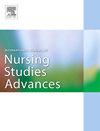重新考虑在临床算法中使用种族、性别和年龄来解决实践中的偏见:一篇讨论论文
IF 3.1
Q1 NURSING
International Journal of Nursing Studies Advances
Pub Date : 2025-07-06
DOI:10.1016/j.ijnsa.2025.100380
引用次数: 0
摘要
临床算法通常被用作决策支持工具,结合患者特定的特征来预测健康结果。风险计算器是临床算法,特别适合于基于风险估计的资源分配。尽管这些计算器通常使用生理数据进行估计,但它们也经常包括人口统计变量,如种族、性别和年龄。近年来,将种族作为一个输入变量被仔细审查,因为它减少了,不能很好地代表生物差异,并导致服务分配不公平。人们很少注意到其他人口特征,如性别和年龄,以及它们产生类似后果的可能性。通过应用一个框架来理解整个机器学习生命周期中的伤害来源,并提出案例研究,本文旨在研究与临床决策算法(特别是风险计算器)中包括性别和年龄相关的潜在伤害来源(即代表性和分配性伤害)。在此过程中,本文论证了在用于资源分配的临床算法中,包括性别和年龄在内的系统性歧视、减少测量实践和观察到的人口群体之间风险估计的差异是如何导致代表性和分配性损害的。这篇论文最终敦促临床医生仔细审查将简化的人口统计学特征(即种族、二进制编码的性别和实足年龄)作为潜在生物学机制在风险评估中的代理的做法,因为它违反了正义和非恶意的生物伦理原则。执业临床医生,包括护士,必须具备基本的模型素养,以解决算法开发、验证和临床实践中引入的潜在偏差。本文章由计算机程序翻译,如有差异,请以英文原文为准。
Reconsidering the use of race, sex, and age in clinical algorithms to address bias in practice: A discussion paper
Clinical algorithms are commonly used as decision-support tools, incorporating patient-specific characteristics to predict health outcomes. Risk calculators are clinical algorithms particularly suited for resource allocation based on risk estimation. Although these calculators typically use physiologic data in estimation, they frequently include demographic variables such as race, sex, and age as well. In recent years, the inclusion of race as an input variable has been scrutinized for being reductive, serving as a poor proxy for biological differences, and contributing to the inequitable distribution of services. Little attention has been given to other demographic features, such as sex and age, and their potential to produce similar consequences. By applying a framework for understanding sources of harm throughout the machine learning life cycle and presenting case studies, this paper aims to examine sources of potential harms (i.e. representational and allocative harm) associated with including sex and age in clinical decision-making algorithms, particularly risk calculators. In doing so, this paper demonstrates how systematic discrimination, reductive measurement practices, and observed differences in risk estimation between demographic groups contribute to representational and allocative harm caused by including sex and age in clinical algorithms used for resource distribution. This paper ultimately, urges clinicians to scrutinize the practice of including reductive demographic features (i.e. race, binary-coded sex, and chronological age) as proxies for underlying biological mechanisms in their risk estimations as it violates the bioethical principles of justice and nonmaleficence. Practicing clinicians, including nurses, must have an underlying model literacy to address potential biases introduced in algorithm development, validation, and clinical practice.
求助全文
通过发布文献求助,成功后即可免费获取论文全文。
去求助
来源期刊

International Journal of Nursing Studies Advances
Nursing-General Nursing
CiteScore
5.80
自引率
0.00%
发文量
45
审稿时长
81 days
 求助内容:
求助内容: 应助结果提醒方式:
应助结果提醒方式:


